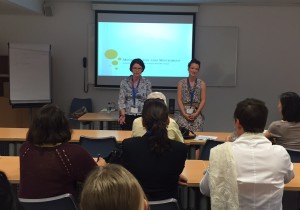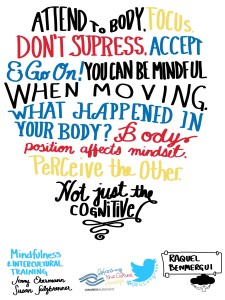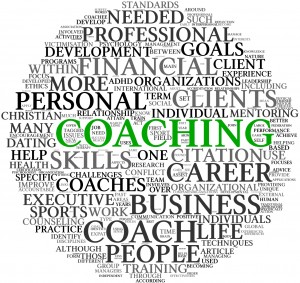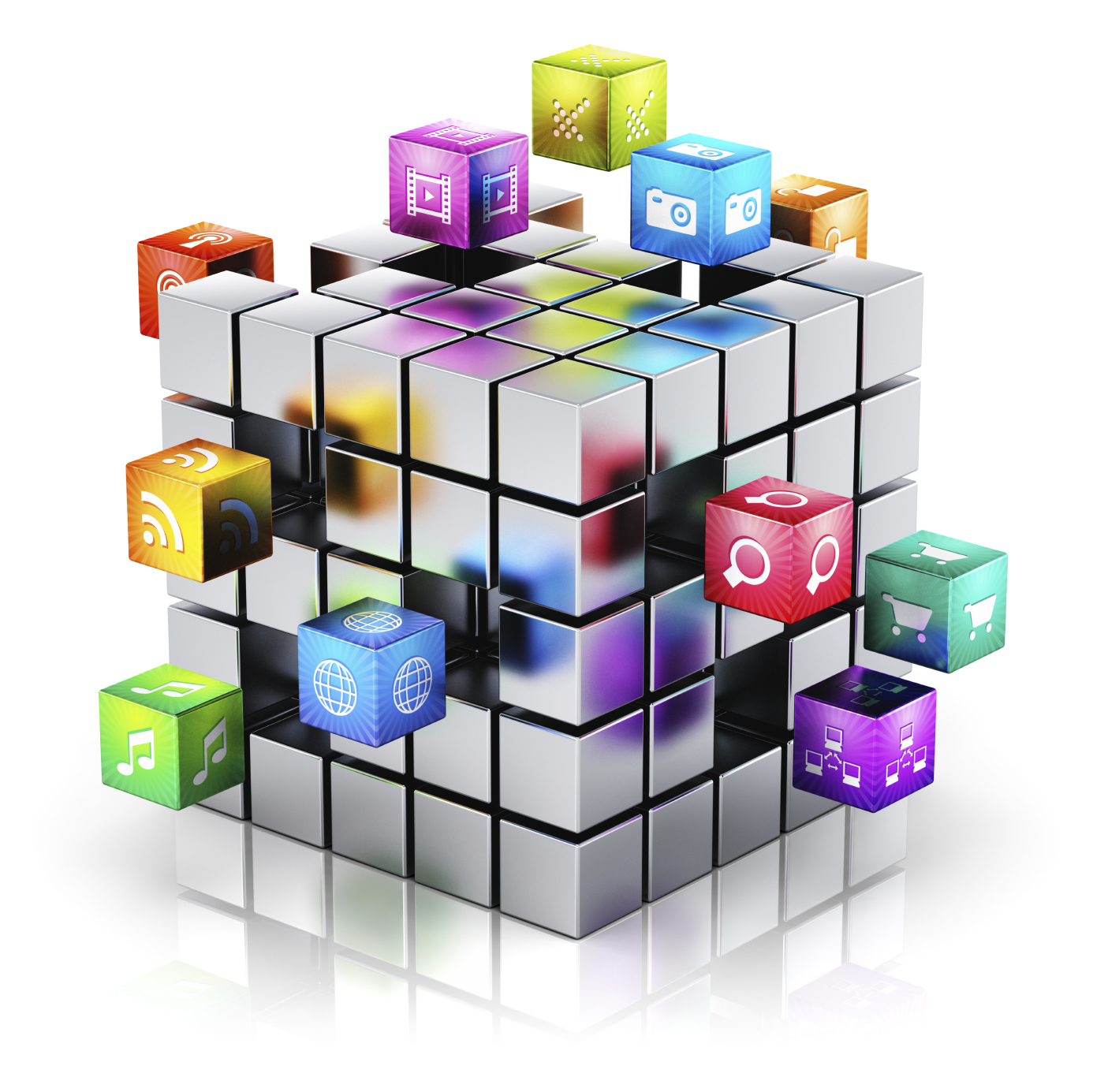
Want to have a look at what #SIETAR (society for #intercultural education, training and research) looks like? Check out this video!
https://lnkd.in/ePeFfej
Tag: intercultural communication
Linking Mindfulness to Sports and Intercultural Training
Leadership, Diversity and Mindfulness applied to sports
Last Saturday at the SIETAR Europa conference, I had the chance to animate a wonderful workshop with a fellow interculturalist and friend Susan Salzbrenner from Fit Across Cultures.  As we both have a strong background in sports and did not want to engage in more theories and “brain” focused presentations and activities, we decided to animate a session connecting our two brains[1]: the cranial one which we know and the so-called “enteric brain” located in our bellies (in the gut).
As we both have a strong background in sports and did not want to engage in more theories and “brain” focused presentations and activities, we decided to animate a session connecting our two brains[1]: the cranial one which we know and the so-called “enteric brain” located in our bellies (in the gut).
How did we do that?
Well, by linking intercultural training and the importance of “embodiment[2]” and mindfulness (moment to moment awareness) to athlete’s realities and movement. After a moment of mindful walking and grounding and by means of a very practical “experiment” we had the participants tune into themselves and connect with their feelings and body experience in different challenging intercultural and interpersonal situations.
Although this is far from being easy, the participants were wonderful and shared what was going on for them. Being able to relate to your bodily experience can actually inform you even before your thoughts come in, when it comes to decisions, dealing with particular emotional situations or simply in our daily lives. In the context of sports, athletes also have to train mentally in order to be able to resist pressure in competitions and perform at their best. Being in sync with their bodies helps them to overcome differences and difficult situations and enables diverse teams – when managed well – to outperform competitors.
What a great learning and what a powerful group! Thanks to all of you who have participated and thanks Raquel Benmergui for the wonderful graphic representations!
Jenny
[1] Compare to : Amnon Buchbinder on Philip Shepherd’s “Out of our heads”
[2] In the sense that: “We make the experience of culture through our bodies”, see Ida Castiglioni: “Embodiment of Culture”
Have you ever tried out Coaching or Counselling services?
I have! Long before I became a professional coach myself and when I was still living in Canada, I had the pleasure of closely working with an excellent coach, who helped me quite a lot on my professional path, navigating the stormy waters of life in an international organization. 
As a matter of fact, I decided to become a coach myself back in 2007 as I had been constantly training and mentoring people in global settings across the globe. Then living in Zurich, I began looking out for an adequate and professional school as already back then many people called themselves ‘coach’ without really having followed a thorough education (even without having ever coached anybody)!).
Two years, many coachings, supervisions, sessions and a dissertation plus Swiss level exam later, I finally had my credentials in hand. Naturally, being myself and international chameleon and speaking/writing many languages, my specialty became coaching/counselling in intercultural and global settings. Expatriates, foreigners living in or planning to move to a certain country, professionals working in an international environment and their spouses have since then been a main focus of interest.
In addition, practicing mindfulness, and related techniques since many years, I am bringing this knowledge into my day-to-day work. It really is amazing how self-awareness, openness and non-judgment enable you to deal with differences in a very effective way. Especially, as uncertainty is a more or less persistent companion nowadays, leading to stress and ambiguity, mindfulness techniques brought into coaching and linked to dealing with intercultural issues and situations of difference are a powerful tool that everybody can learn.
If you are:
- Dealing with a challenging situation in your career or at home
- Settling into a new environment, be it a different culture or other
- Working in an international environment
- Planning to move abroad or to another region soon
- Dealing with uncertainty, stress, ambiguity
- Looking for help and guidance on your way forward
- Looking for personal growth and development
- …
Coaching/Counselling can support you on your journey. You are not alone and nobody knows better than yourself how you are feeling and which way to go. You might simply need some clarity in your thoughts and insights as well as a fresh look at your issues. Everybody can grow and you might learn things about yourself that you would not have expected. Coaching really is for everybody and the various tools and resources can have incredible results. Be it face-to-face or online, you are the architect of your own life!
Register today and get 50% off your first 1 hour trial coaching session (online or face-to-face if you live in the French-speaking part of Switzerland)! Prices usually start at 150 CHF/hour and can be adapted if you are a student, unemployed, with an NGO or still in training and the offer is valid until the 11th of May 2014. Once registered you will receive all details by email and will then be able to decide if you want to take advantage of the offer or not (the offer is valid for the first 20 subscribers).
Looking forward to hearing from you!
Jenny
Communicating with Different Cultures – a few Tips
The other day, while preparing a class in international marketing that I am going to give in France beginning of April, I stumbled upon this very useful handbook. Although very basic, I thought that it was still extremely helpful to read through it once again.
So here they are, a few simple points to help you communicate with people no matter where they come from:
- Be very aware of yourself
Try to understand how and why you communicate the way you do. Also pay attention to your speed and how you express yourself in languages which are not your mother tongue. This will help you appreciate others’ styles and how you may need to adapt to them. Pay attention to how people react and respond to you by looking for subtle changes in facial expressions and posture. Be aware however that non-verbal signs differ from one culture to another.
- Be curious, with respect
If you work closely with people from a particular country, learn about the people and how they like to communicate – from greetings to gestures to non-verbal behaviour. Build your know-how by observing, asking questions, watching movies, reading current affair articles and researching online.
- Clarify your intentions
Always explaining what you mean, especially when you are not communicating in your mother tongue can save lots of trouble and problems. You could for example explain that in your culture, communication tends to be more direct and that meaning only comes from words and not from interpreting the situation (low-context culture).
- Take a step back from the situation
Whenever you find yourself in a confusing situation, get into the habit of asking what is going on and seeking clarification from your counterparts. Usually the other person’s intentions are good, you are simply confused as you don’t know how to interpret what is going on.
- Put yourself in the other person’s shoes
We all have preferences as to what we like and dislike when it comes to communication and we tend to make quick judgments about people based on these preferences. The challenge is to stay open in a non-judging way. Try to put yourself into the other ‘worldview’, experiencing but not assimilating it, well aware of the differences and similarities.
- Do not stereotype
Do not stereotype but read individuals. If you start judging, tell yourself “here I am judging again”. Every person is different and you might even be surprised about how a person with a certain cultural background behaves completely different from what you would have expected. Everybody is a human being, an individual, just like you!
- Keep trying and don’t give up
We change the way we communicate on a frequent basis depending on who we are talking to (a friend, a family member, a colleague). Communicating effectively with people from other cultures just means being conscious and sometimes making a few more changes. Be aware that you can only change yourself and not the others around you. The more you are sensitive to how things work, the more you will see progress and positive outcomes.
- Be patient with yourself and don’t be afraid of making mistakes
The beauty lies in learning from mistakes and openly discussing what happened with your peers, a mentor, partner or even a coach. As you develop your intercultural skills and competence you will learn how to do things better over time! After all, skills can be acquired, they only need practice, practice, practice…
Communication skills
See on Scoop.it – Mindful Leadership & Intercultural Communication
Being able to communicate with others is one of the best life skills a person can develop. Someone who can effectively communicate thoughts, ideas, and feelings is better equipped for success.
Excellent post on communication, great read!
See on principlesofstrategy.com
Doing Business Across Cultures
 Is the title of the conference I am going to speak at in February in London, UK. More specifically, my topic touches on building a relationship remotely and what cultural etiquette you should employ when using email, LinkedIn and other social networks to build relationships internationally.
Is the title of the conference I am going to speak at in February in London, UK. More specifically, my topic touches on building a relationship remotely and what cultural etiquette you should employ when using email, LinkedIn and other social networks to build relationships internationally.
Have you ever thought about how you communicate in the online world? As body language, facial expression or tone of voice from your counterparts are missing, how would you know if your message was understood? And more importantly, which rules should you be following when you are using online tools, be it so commonly used ones like e-mail? Not much research has been done to my knowledge on how different cultures are communicating through different online channels.
There is data on the Internet use across the population (click here for more info on Europe for example: ); there is also data on social media use by enterprises (click here for stats in Europe). Precise information on how written language and images are used online analyzing the data by culture and differentiating between the various social media channels are rare. Usually research focuses on the comparison of one culture and one medium to another.
During our workshop in London, Dr. Pari Namazi and myself are going to touch on some interesting aspects, working on concrete examples and speaking about our own multicultural and international experience.
Being mindful about how online communication can be perceived in different cultures is indispensable for multinational companies, governments, charities, NGOs and in fact, for any organization operating in today’s global marketplace.
Avoiding cultural mistakes whilst demonstrating respect and openness for another culture will pave the way to successful interpersonal relationships…
Interested? Register here to get at 20% discount. All you need to do is to click on the speaker button and use the discount code: Jenny3 .
Speakers include:
Andrew Kain, Founding Chairman, AKE Ltd.
Richard D. Lewis, Chairman, Richard Lewis Communications Ltd
Pari Namazie, PhD, Managing Partner, Atieh International GmbH
Nick Hurst Founding Director Burts Potato Chips
Peter C. Pang US China Counsel Dickinson Wright
Jenny Ebermann Freelance Consultant
Bobby D. Butler, Jr., Senior Vice President Global Partnership Management, Universal Weather & Aviation, Inc.
John Smart, Partner, Head of Fraud Investigation & Dispute Services, Ernst & Young LLP
Nigel R Brahams, Head of Legal, EMEA, GFI Group
Looking forward to seeing you there and if you know of interesting research on the subject matter, please let me know!
Jenny

Culture: a primarily physical experience
Do you know the feeling? You are traveling to a foreign country where the people speak a language that you don’t understand. You have come a long way to be where you are now, i.e. you traveled through time and covered many miles/Km. You feel tired and need some sleep to adjust to the time difference. The food you have eaten doesn’t taste the same and you feel somewhat uncomfortable, as you don’t really know how your body will react to the different spices and ingredients. You hear some really strange noises from the street, again very unfamiliar, which you cannot identify. And more and foremost, you cannot understand what people are saying although you are here to negotiate and your business partners already came to greet you at the airport.
I am pretty sure that you know what I mean and have already experienced it in one way or the other!
What is really important here though, is to be able to decipher these feelings so that the learning experience in the new culture can take place. Following Ida Castiglioni, “cultural experience is primarily physical”, hence “(…) by learning from the emotion of the body, one can have a deeper experience of ‘opening’ to an alternative.”[1]
The above has direct implications when working with Dr. Bennett’s DMIS in the field of intercultural training, teaching, coaching and consulting: the body should not be forgotten when striving towards enthnorelativism (acceptance, adaption and integration).
During the “Embodied Culture” course led by Dott. Ida Castiglioni that I attended last week in Milan, the participants had the opportunity to experience for themselves what this actually means and how to leverage the findings for building up competence while working with others. In fact, following Dott. Castiglioni, there are three main areas of intervention where working with the awareness of self and body in the cultural context makes sense:
- Developing Empathy
- Acquiring the ability to shift into a different category, to shift ‘frames’ and
- Constructing an integrated multicultural identity.
For our example at the beginning of this post, this means that once you are aware of your perceptions and feelings and once you attend to them, exploring and integrating them into your cognitive processes you are constructing the experience holistically. The felt experience allows a person to adapt his or her own feelings to a new situation and thus gives way to appropriate behavior in a new context.
If this post has made you curious about the reactions of your own body when dealing with difference, try to look inside yourself next time you are in an unfamiliar situation. What do you feel? How does your body react? What can you learn from it?
Jenny
[1] Castiglioni I. (2013). Constructing Intercultural Competence in Italian Social Service and Healthcare Organizations. Research Series published by the University of Jyväskylä, Finland. Pages 1-6.

Connecting the dots – Furthering Creative Innovation through Diversity
Just coming out of an excellent three-day course in Milan with Milton Bennett and Lee Knefelkamp, I could not help myself but to write these couple of sentences down, now that they are still fresh.
I learned that a person’s view on ethics depends heavily on his/her developmental status of learning or knowledge as identified in the so-called “Perry Scheme”.[1] The different positions in this scheme can in turn be very nicely integrated into M. Bennet’s “Developmental Model of Intercultural Sensitivity” (DMIS). The more a person moves up the Perry scheme, the more he/she is open, able to deal with ambiguity and a critical thinker making conscious choices based on active reasoning. The more a person moves from enthnocentrism to ethnorelativism in the DMIS, the more the cultural context will be included in his/her decision making processes and the more culturally appropriate behavior will be part of his/her cultural identity.
Thus in the ultimate stage of development in both models (DMIS and Perry Scheme), considered choices are made in face of legitimate alternatives; the person acts with contextual ethical commitment.
For me, this connection between learning/knowledge, ethics and intercultural communication certainly makes sense and opens up many different ways of exploring the field. Once a group is for example able to deal with difference, which normally happens between “minimization” and “acceptance” in the DMIS and position 5 in the Perry Scheme (constructing meaning), it will certainly add value to sustained innovation and creativity simply by bringing different perspectives into the discussion. Research has indeed shown that heterogeneous, diverse teams who are able to effectively work together (which requires a certain level of intercultural competence) produce much better results than when the teams are composed homogeneously, with people from the same background or with the same values.
Creative innovation is indeed something that many companies nowadays are striving for. The increasing acceleration of technology obsolescence with shrinking lifecycles – paired with an increasingly strict regulatory environment in the medical industry for example – is impacting already the way companies operate. Recent surveys are pointing out that currently the most innovative industries are the ones, which are able to better connect the commercial and technical dots.
And how do you connect these dots? Well, firstly by enabling cross-functional, virtual and multinational teams to effectively communicate and work together. Secondly, companies have to encourage dialogue and creative thinking by signaling that ideas can be tested out, even if sometimes in the end, they are not successful. Incentives and means have to be found to include and anchor not only intercultural competence criteria but also a reward mechanism for constructive disagreement as well as creative idea generation in policies, job descriptions and performance evaluations so that new impulses can be generated.
There is still much to be done here…I am ready, are you?
[1] Perry, W. (1970, 1998) Forms of Cognitive & Ethical Development in the College Years : Knefelkamp, L. « Introduction » ; Moore, W. Overview of the Perry Scheme.




